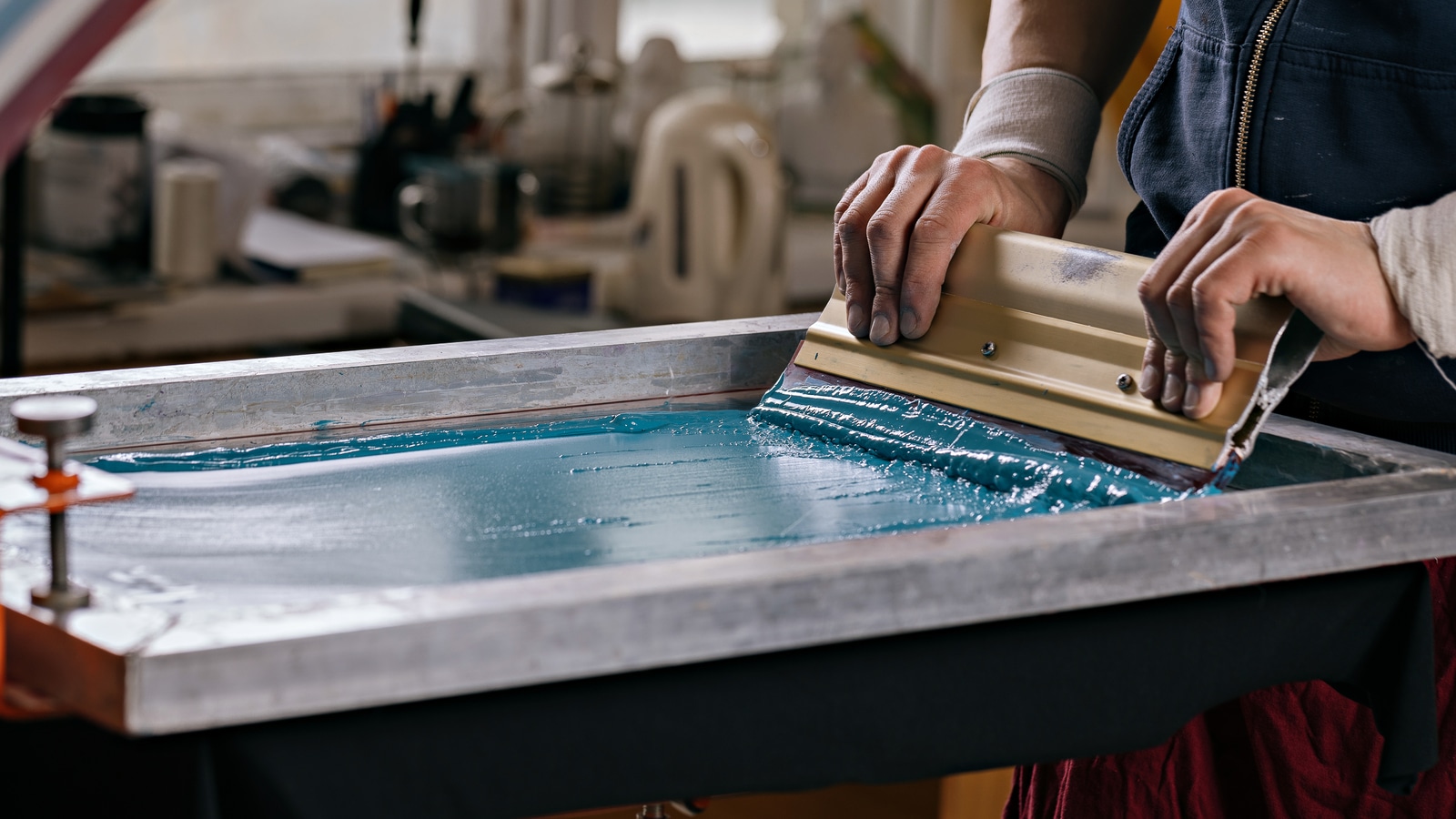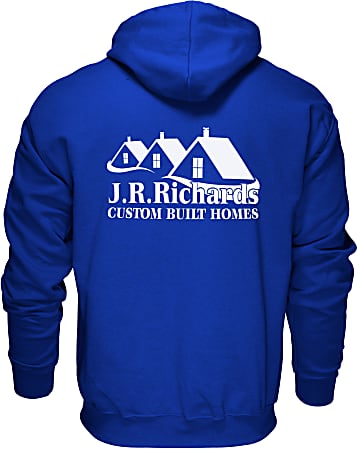The Ultimate Display Printing Set: Vital Devices for Effective Garment Printing
When it concerns screen printing, having the right tools can make all the difference. Your package should include essentials like a tough frame, a reputable squeegee, and a high quality exposure device. But what concerning the displays and inks? Selecting the appropriate products tailored to your particular tasks is vital. You'll quickly uncover how these parts work together to boost your printing game. Let's discover what each device gives the table and just how to maximize their capacity.
Understanding Screen Printing Essentials
When you engage yourself in screen printing, you'll discover it's both an art and a scientific research. As soon as dried out, you expose the display to UV light with your style positioned on top, allowing you to develop a pattern.
Next, you'll establish your printing station, aligning your display with the garment. Utilizing a squeegee, you'll push the ink via the display, guaranteeing also coverage. The charm of screen printing exists in its convenience; whether you're publishing bold graphics or complex patterns, the procedure remains the same.
As you method, you'll find out about ink kinds, drying out times, and color mixing. Each print is a chance to refine your technique and express your creative thinking, making display printing a rewarding endeavor for anybody enthusiastic regarding design.
Crucial Elements of the Display Printing Set
To get started with screen printing, you need to comprehend the crucial parts of your kit. You'll want to acquaint on your own with the fundamental devices, the types of inks and solutions you'll utilize, and the devices for application. Each aspect plays an important duty in attaining premium prints on your garments.
Standard Tools Overview
A well-equipped screen printing set is important for any person wanting to create spectacular garment styles. Start with a tough screen printing structure, which holds your mesh securely for precise printing. You'll additionally require a squeegee to press ink through the mesh onto your material. Do not fail to remember the direct exposure unit or source of light, crucial for transferring your style onto the screen. A washout station assists you clean screens after usage, guaranteeing they await your following project. Lastly, buy a registration system to line up several shades properly. With these vital elements, you'll have a solid structure for your screen printing trip and can concentrate on bringing your imaginative visions to life.
Inks and Emulsions
After collecting the standard tools, your next focus needs to get on inks and solutions, which play an essential function in achieving vivid and lasting prints. When picking inks, consider water-based, plastisol, or discharge inks based on the textile kind and wanted finish. Water-based inks are soft and green on garments, while plastisol offers resilience and bright shades.
Emulsions, on the other hand, are necessary for producing your screens. They aid establish the stencil needed for printing - custom screen printing. You'll wish to select a high-quality emulsion that suits your ink type and exposure method. Bear in mind to store solutions and inks correctly to keep their performance. With the appropriate options, you'll establish the structure for magnificent, professional-grade prints.
Devices for Application

Selecting the Right Screens for Your Projects
When you're picking displays for your tasks, the mesh count and frame product are necessary factors to take into consideration. A greater mesh count is terrific for fine details, while the right frame material can improve toughness and stability. Comprehending these aspects will aid you achieve the most effective lead to your screen printing undertakings.
Display Mesh Matter
Picking the appropriate display mesh matter is vital to accomplishing the desired outcomes in your display printing tasks. The mesh count describes the number of strings per inch in the screen, impacting how much ink obtains moved onto your garment. For detailed styles and fine lines, choose a greater mesh count, commonly between 200 and 305. If you're dealing with thicker inks or vibrant styles, a lower mesh count, around 110 to 160, will work better. Constantly think about the sort of ink and material you're utilizing, as these aspects affect the mesh count option. Exploring with different counts can aid you discover the perfect balance for your details tasks, making certain crisp, dynamic prints each time.
Frame Product Options
The display framework material you pick plays a substantial function in the quality of your prints. You've got a couple of choices to review, each with its benefits. Aluminum structures are light-weight, durable, and resistant to corrosion, making them best for long-lasting usage. They supply superb tension, ensuring crisp prints. On the various other hand, timber frameworks are a lot more conventional and can be more affordable, however they're much heavier and may warp over time. You may prefer light weight aluminum for its integrity if you're simply starting. For larger projects, pick frames that can endure the tension needed for great details. Eventually, select a product that matches your workflow and budget while guaranteeing your prints come out looking sharp and expert.
Choosing Inks for Different Fabrics
How do you ensure your display printing styles look last and lively on numerous fabrics? Selecting the best ink is key. If you're printing on polyester or synthetic blends, take into consideration utilizing plastisol inks.
Do not forget specialized inks like discharge or metal inks. Discharge inks can remove color from textile, leaving a soft print, while metal inks include a shiny coating that attracts attention. Always test your inks on the certain material prior to committing to a big run; this his comment is here helps you assess color vibrancy and resilience.
Lastly, bear in mind the material's weight and appearance. Selecting the appropriate ink for each fabric type will certainly ensure that your layouts not just look wonderful however likewise withstand the examination of time.
The Relevance of Squeegees in Printing
Squeegees play an important function in accomplishing top quality prints in screen printing. They're your key tool for transferring ink via the stencil onto the textile, and the ideal squeegee can make all the difference. When you use regular pressure with a squeegee, you guarantee an even distribution of ink, decreasing the possibilities of irregular or blotchy prints.
Picking the ideal durometer or firmness of your squeegee is important, as it influences just how much ink is pulled with the mesh. A softer squeegee is terrific for in-depth layouts, while a firmer one functions well for strong graphics. Additionally, the width of the squeegee article must match your screen dimension to optimize your printing process.
Taking time to grasp your technique with the squeegee will certainly lead to cleaner, sharper prints. Don't ignore this essential device-- obtain to know it, and you'll elevate your display printing game.
Preparing Your Art Work and Emulsion
Attaining wonderful prints starts long prior to you choose up your squeegee. When you're satisfied with the layout, print it on transparency movie, keeping in mind that the darker the picture, the far better it blocks light during exposure.
Use it equally to your display in a dimly lit location to avoid premature exposure. When your screen is prepared, subject it to UV light according to your emulsion's directions (custom screen printing).
After washing out the unexposed solution, allow the screen dry completely. With your art work and emulsion prepared, you're set for the printing process!
Maintenance Tips for Lasting Tools
Although it may seem tiresome, normal maintenance of your display printing devices can significantly prolong their lifespan and warranty regular outcomes. Start by cleansing your screens right away after use. Utilize a mild solvent to get rid of ink residue; this helps prevent buildup that can ruin future prints. Shop your displays flat to stay clear of bending, and maintain them far from direct sunlight. custom screen printing.
For squeegees, clean the blade after each use to stop ink from drying out on it. Consistently look for nicks or damages and replace them as required. Do not forget your direct exposure unit-- clean the glass surface on a regular basis to validate ideal light exposure.

Often Asked Concerns
Can I Screen Publish on Dark Colored Fabrics?
Yes, you can screen print on dark colored textiles! Simply use a proper nontransparent ink developed for dark materials. It'll assure your layouts pop and look vibrant against the fabric's background. Satisfied printing!
Exactly how Do I Tidy My Screens After Printing?
To cleanse your screens after printing, you'll need a stress washing machine or pipe to eliminate excess ink. Use a screen cleaner or light detergent with a soft brush to scrub away deposit. Wash completely.
What Safety Gear Do I Need While Screen Printing?
When display printing, you'll need gloves to protect your hands, a mask to stay clear of inhaling fumes, and security goggles to shield your eyes from inks and chemicals. Being mindful assurances a delightful and secure experience.
Can I Use the Kit for Various Other Products Besides Textile?
Yes, you can use the set for other materials besides fabric. It works well on surfaces like plastic, wood, and paper. Just make certain the ink and techniques fit the material you pick.
How much time Does It Consider Ink to Cure?
Ink click resources usually takes regarding 1 day to heal fully, yet it can vary based upon the type and density. You'll want to examine the supplier's guidelines for details healing times to guarantee suitable results.
Making use of a squeegee, you'll press the ink through the display, making certain even insurance coverage. You'll require a trustworthy squeegee, which aids equally distribute ink across your screen.Selecting the right display mesh count is important to achieving the wanted outcomes in your display printing projects. The mesh count refers to the number of strings per inch in the display, impacting just how much ink gets transferred onto your garment.To clean your displays after printing, you'll require a stress washer or tube to get rid of excess ink.